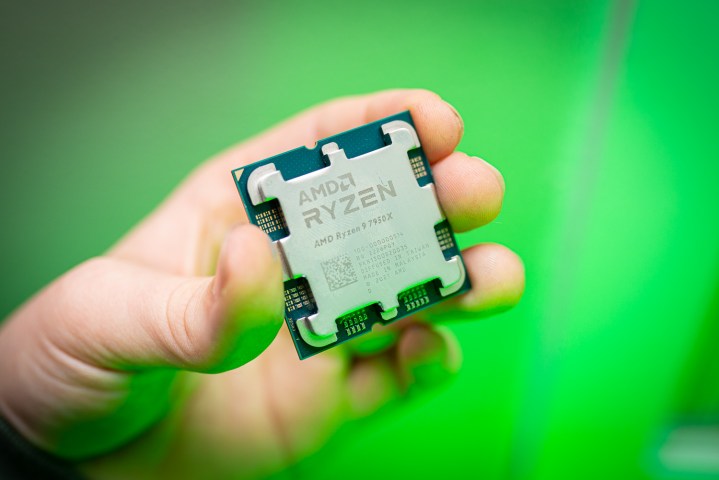
AMD’s Curve Optimizer is by far my favorite feature of Ryzen CPUs. It allows you to tune the voltage of a process across the frequency range with a simple offset, and it’s been an indispensable tool as I’ve undervolted the Ryzen 7 7800X3D inside my small form factor gaming PC. And with Ryzen 9000, AMD could be pushing the feature even further with something called Curve Shaper.
The news comes from 1usmus, a developer who’s created tools for Ryzen CPUs such as the DRAM Calculator and the Hydra overclocking utility. The developer says Curve Shaper will allow Curve Optimizer to work across the entire temperature range. Previously, according to the developer, stability concerns lead to cases where your processor would be running at a high temperature without receiving much benefit from Curve Optimizer. “Now everything will change,” the developer wrote in a post on X (formerly Twitter).
The release of Zen 5 is still a month away, but today I'll be bringing the curtain down on one incredible new overclocking feature for enthusiasts 😎
Curve Shaper, an add-on for AMD Curve Optimizer. pic.twitter.com/L2n6rRaNGH
— 1usmus 🇺🇦 (@1usmus) July 2, 2024
As you can see in the table above, Curve Shaper will define a positive or negative offset for Curve Optimizer for different combinations of frequency and temperature. Although that shouldn’t change peak performance — what you see at max frequency and high temperatures — it should optimize performance across the frequency and temperature range. That could make a big difference with Ryzen 9000 CPUs, particularly in games.
As we’ve seen with CPUs like the Ryzen 7 7800X3D, the processor often won’t run at max frequency when playing games. It stays in a more efficient window that may not get the full benefit of Curve Optimizer. Curve Shaper can optimize these situations in a way that Curve Optimizer currently doesn’t. It can also help with undervolting, hopefully lower temperatures when the CPU is idling.
AMD hasn’t confirmed Curve Shaper yet, but we should hear more about it soon if it’s a feature the company is working on. Ryzen 9000 CPUs are due out at the end of the month, and AMD is making some bold performance claims. The company says the Zen 5 architecture that Ryzen 9000 CPUs use comes with a 16% increase in Instructions Per Clock (IPC) compared to the previous generation, and that it provides upward of a 23% boost in gaming performance compared to the Intel Core i9-14900K.
They could come in at a lower price, too. Recent retail listings for Ryzen 9000 CPUs suggest AMD could lower the price of the chips compared to the previous generation, which would make sense. With the last generation of CPUs, we saw AMD launch at high prices before quickly lowering the prices of its CPUs. This time around, AMD could launch with lower prices right out of the gate.
The lingering question for Curve Shaper, beyond if it’s real, is where it will work. It’s possible AMD could roll out the add-on to its range of Ryzen CPUs, but it could also restrict the feature to Zen 5 CPUs. We saw something similar happen with Intel’s Application Optimization (APO) feature, which was initially restricted to Intel’s most recent high-end CPU.




